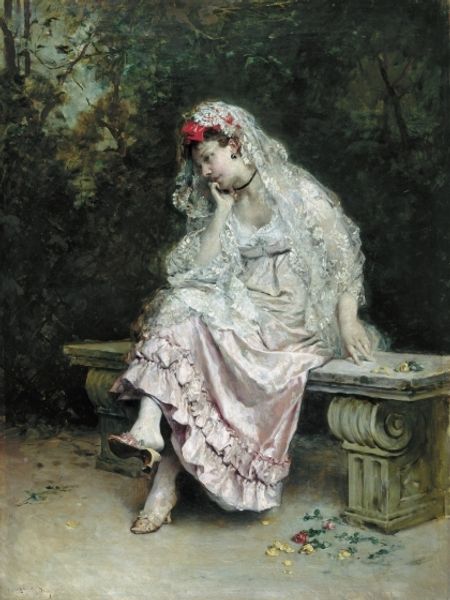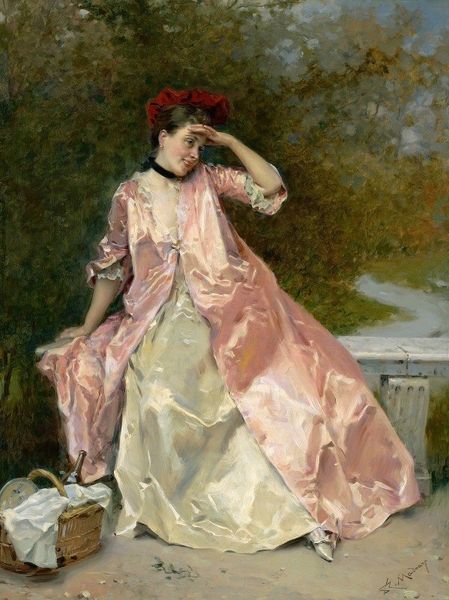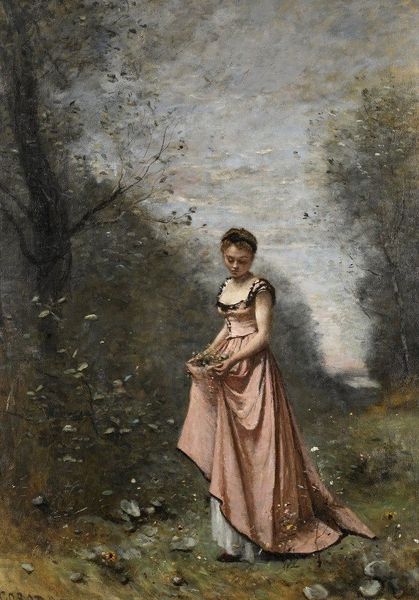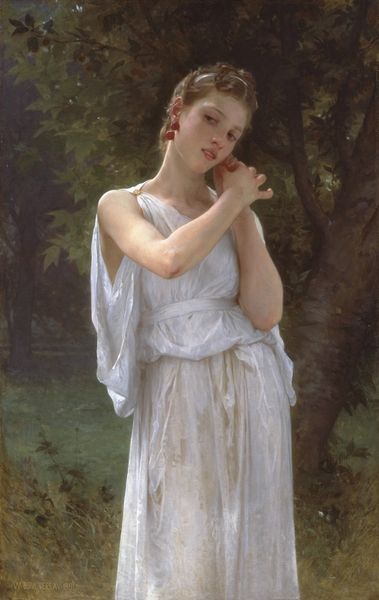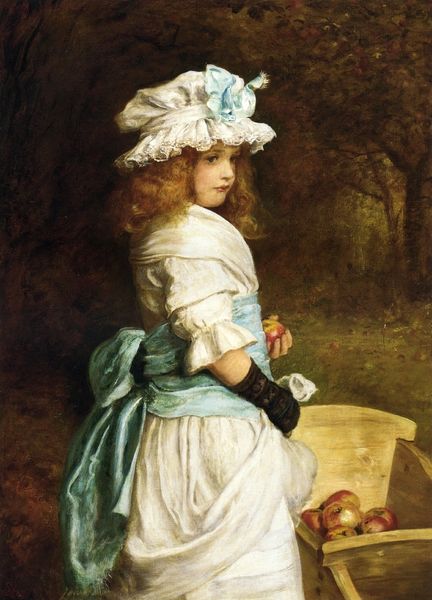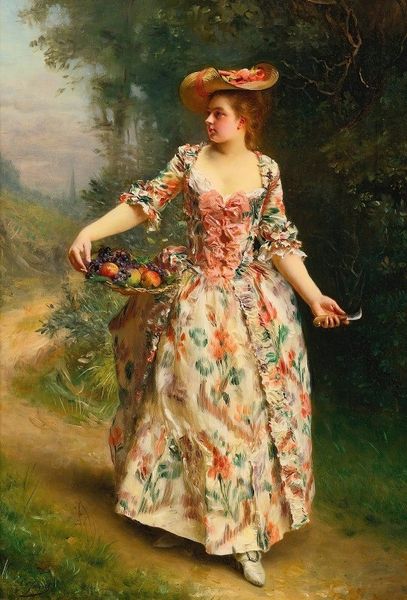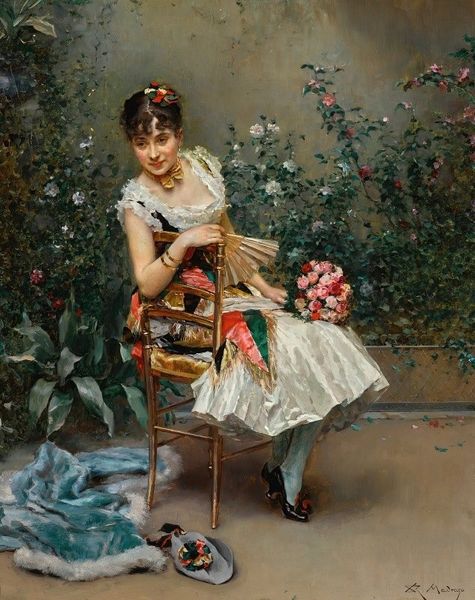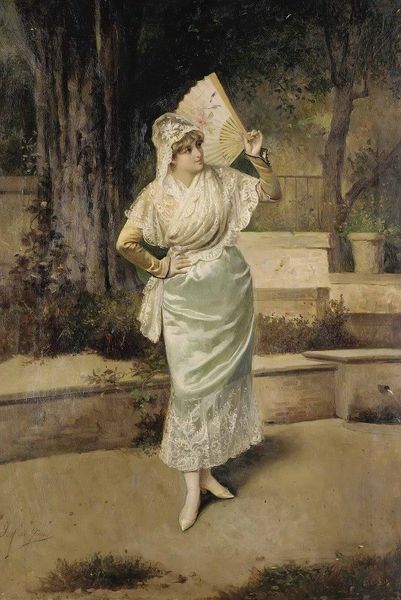
oil-paint
#
portrait
#
gouache
#
figurative
#
impressionism
#
oil-paint
#
landscape
#
figuration
#
oil painting
#
genre-painting
#
academic-art
#
watercolor
#
realism
Copyright: Public Domain: Artvee
Curator: Raimundo de Madrazo, a prominent figure in the Realist movement, is thought to be the creator of this canvas; the painting is entitled “Young Girl Sitting at the Foot of a Tree”. Editor: It immediately strikes me as rather romantic, even sentimental. The light is so gentle and she appears carefree in her repose. Curator: Consider, though, how this sentimentality may be tied to specific social contexts. Think about the industrial revolution, urbanization, and the rising bourgeoisie audience and the aesthetic shift towards idealized portrayals of leisure. Oil paints enabled meticulous rendering; the materials reflect that pursuit of naturalistic detail, mirroring the values of academic art traditions which had patrons to satisfy. Editor: Of course, and I appreciate the suggestion. Even the choice of imagery feels carefully constructed to elicit a response. The girl’s posture, with her hands behind her head and her gaze meeting ours, is an open invitation to interpretation. And her positioning at the foot of the tree has symbolic resonance, evoking both vulnerability and connection to nature. Even the basket of fruit suggests abundance and fertility. Curator: True, the abundance you notice also can lead into thinking of the agricultural labor systems supporting this visual culture. Who gathered this fruit? Was this even sourced locally? It is painted with such idyllic simplicity; you miss that it is actually more about labor stratification. It prompts important questions regarding land ownership. The artistic process serves to disguise such socioeconomic aspects and to create a sanitized representation of nature that caters to specific class interests. Editor: An important consideration. Yet, I can’t dismiss how art also possesses its own enduring emotional qualities. Beyond economic critique, “Young Girl Sitting at the Foot of a Tree” captures youth, summer, beauty and evokes something fundamentally timeless, even dreamlike. These feelings endure regardless of our critique of its original production. Curator: Perhaps so, but analyzing materiality directs focus away from such subjective responses toward tangible contexts and the societal impact this creation caused when first shown. Editor: I still think there is room to enjoy the human resonance the artist evokes using archetypal imagery that speaks to cultural narratives of youthful purity. Curator: An interesting tension—social messaging versus artistic appeal—well worth noting to anyone exploring this work further. Editor: Indeed. Both critical lenses only enrich understanding.
Comments
No comments
Be the first to comment and join the conversation on the ultimate creative platform.


